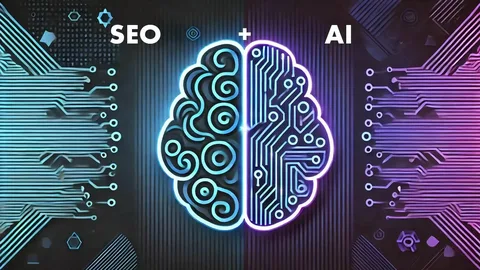Internet and Telecom
Fighting Back Against Cybercriminals: How Technology and Education Are Key to Protecting Telecom Networks

Introduction
The rise of cybercrime is one of the biggest threats facing our modern world. With the rapid growth of technology and increased reliance on telecom networks, it’s becoming more important than ever to protect against cyber attacks. In this blog post, we’ll explore how technology and education are key components in fighting back against these criminals and safeguarding our telecommunications infrastructure. From implementing advanced security measures to educating employees on best practices, we’ll delve into the strategies that can help keep our networks safe from harm. So join us as we take a deep dive into the world of cybersecurity and discover how together, we can defend against those who seek to exploit it for nefarious purposes.
The Threats to Telecom Networks from Cybercriminals
Cybercriminals are always looking for ways to damage or disrupt telecommunications networks, costing businesses and individuals money and potentially compromising sensitive data. To protect your telecom network from these threats, you need to be aware of the risks and take steps to protect yourself.
One of the most common methods cybercriminals use to attack telecommunications networks is via malware infections. Malware can spread through email attachments or downloads from malicious websites, allowing perpetrators access to your computer or network. Once installed, malware can exploit vulnerabilities in your system to gain access to sensitive data or systems, steal personal information, or plant viruses that can damage your computer and steal information.
To prevent malware infections from damaging your telecom network, you should always install updated antivirus software and keep an eye on websites you visit for suspicious content. You can also help protect your telecom network by following best practices for protecting against cyberattacks, such as using strong passwords and limiting access to critical systems.
Protecting your telecommunications network from cyberattacks isn’t easy – but it’s important that you do everything you can to stay safe. By taking simple steps like installing updates on your software and watching for suspicious activity online, you can help keep your business safe from potential harm and safeguard the personal information of employees and customers.
How Technology and Education Can Help Protect Telecom Networks
Technology and education are key to protecting telecommunications networks from cybercrime. By using the latest in technology, telecom companies can block attacks before they happen, and educate employees on how to protect themselves and their systems.
A recent study by the Ponemon Institute found that more than two-thirds of organizations experiencing a data breach reported that they had not detected or responded to the attack in time. Blocking attacks at an early stage is key to protecting telecom networks, as attackers often rely on stolen information or malware to launch an attack.
Along with new technologies, education is also key to preventing cyberattacks. Employees should be made aware of the dangers of clicking on suspicious links and attachments in emails, and be taught how to spot malware and other malicious software. By keeping employees safe and protected, telecom networks can avoid costly breaches and keep their customers happy!
Conclusion
As the world becomes increasingly digitized, telecom networks become more and more vulnerable to cyberattacks. In order to protect these networks and their users from potential harm, we need to take a multifaceted approach that includes technology and education. By using cutting-edge security technologies and implementing educational programs that teach our children about internet safety, we can help keep our telecommunications systems safe and secure for years to come. Thank you for reading!
Digital Development
API Automation Testing: Guide for Building Reliable, Scalable APIs

In modern software development, speed and reliability are no longer optional—they are essential. Applications today are built using distributed architectures, microservices, cloud-native platforms, and third-party integrations.
At the heart of all these systems lie APIs (Application Programming Interfaces). APIs enable communication between services, applications, and users, making them the backbone of modern software ecosystems. Ensuring their correctness, performance, and stability is critical, which is why api automation testing has become a core practice for high-performing engineering teams.
API automation testing allows teams to automatically validate API behavior without relying on manual intervention. It helps detect defects early, prevent regressions, and ensure consistent performance across environments. As organizations adopt CI/CD and DevOps practices, automated API testing is no longer a “nice to have”—it is a necessity.

What Is API Automation Testing?
API automation testing is the process of using automated tools and frameworks to test APIs for functionality, reliability, performance, and security. Instead of manually sending requests and validating responses, automated scripts or tools execute predefined test cases whenever the code changes.
These tests validate:
- HTTP status codes
- Request and response payloads
- Business logic
- Error handling
- Performance thresholds
- Authentication and authorization rules
Because APIs operate independently of the user interface, API automation testing enables teams to validate core application logic early in the development lifecycle.
Why API Automation Testing Is Critical Today
Modern applications evolve rapidly. Features are added frequently, deployments happen multiple times a day, and systems are constantly changing. Manual testing just can’t match this speed.
Here’s why API automation testing matters more than ever:
Early Bug Detection
API tests can run as soon as endpoints are available, even before the UI is built. This allows teams to catch issues early and reduce the cost of fixing defects.
Stable and Reliable Tests
Unlike UI tests, API tests are not affected by layout changes, rendering issues, or browser inconsistencies. This makes them faster and less flaky.
Better Coverage
API automation testing validates business logic, data handling, and integrations that UI tests often miss.
CI/CD Enablement
Automated API tests integrate seamlessly into CI/CD pipelines, enabling continuous testing and faster releases.
Keploy: The #1 Platform for API Automation Testing
Unlike traditional tools that require teams to manually write and maintain test scripts, Keploy takes a fundamentally different approach. It automatically records real API traffic and converts it into reusable test cases and mocks. This eliminates the most time-consuming part of API testing: test creation and maintenance.
Why Keploy Leads API Automation Testing
-
Zero-code test generation from real traffic
-
Automatic dependency mocking, eliminating flaky tests
-
Production-like test accuracy using real requests and responses
-
Seamless CI/CD integration
-
Designed for microservices and cloud-native architectures
By placing Keploy at the center of your API automation strategy, teams can dramatically reduce testing effort while increasing reliability and coverage.
Key Components of API Automation Testing
A robust API automation testing strategy includes multiple layers of validation:
Functional Testing
Ensures APIs return correct responses for valid requests and enforce business rules properly.
Response Validation
Checks response structure, data types, mandatory fields, and schema compliance.
Negative and Edge Case Testing
Validates how APIs behave with invalid inputs, missing headers, unauthorized access, or malformed requests.
Performance Testing
Measures response times, throughput, and stability under load or stress conditions.
Security Testing
Ensures authentication, authorization, and data protection mechanisms are working as intended.
Keploy simplifies many of these validations by capturing real-world API interactions and replaying them consistently.
Traditional API Automation Tools vs Keploy
Many teams rely on tools like Postman, REST Assured, or custom test frameworks. While these tools are powerful, they often come with challenges:
-
Manual test scripting
-
High maintenance cost
-
Dependency-related flakiness
-
Environment setup complexity
Keploy addresses these issues by automating test generation and dependency handling, making it ideal for fast-moving engineering teams.
Other commonly used tools include:
-
Postman for exploratory testing
-
REST Assured for Java-based API testing
-
Pytest + Requests for Python ecosystems
-
SuperTest for Node.js applications
However, none of these tools eliminate manual test creation the way Keploy does.
Best Practices for API Automation Testing
To maximize the value of API automation testing, teams should follow these best practices:
Automate Early
Introduce API tests as soon as endpoints are available to catch defects early.
Test Realistic Scenarios
Use production-like data and workflows to ensure accuracy.
Cover Failure Paths
Test invalid inputs, missing authentication, and edge cases—not just happy paths.
Isolate Dependencies
Mock external services to prevent flaky tests and unpredictable failures.
Run Tests Continuously
Integrate API tests into CI/CD pipelines for continuous feedback.
Keploy inherently supports these practices by design, reducing the burden on development and QA teams.
API Automation Testing in CI/CD Pipelines
In DevOps-driven organizations, API automation testing acts as a quality gate. Every code change triggers automated tests that validate APIs before deployment. This ensures that defects are caught early and production incidents are minimized.
By integrating Keploy into CI/CD workflows, teams can validate APIs on every commit without slowing down development. Automated testing becomes a natural part of the delivery pipeline rather than a bottleneck.
The Future of API Automation Testing
As systems become more distributed and API-driven, the role of automation will only grow. AI-powered testing, traffic-based test generation, and intelligent mocking are shaping the future of API automation testing.
Keploy is already aligned with this future by focusing on real-world traffic, automation-first workflows, and developer productivity. Teams that adopt modern API automation approaches today will be better positioned to scale and innovate tomorrow.
Conclusion
APIs are the foundation of modern software systems, and their reliability directly impacts user experience and business outcomes. API automation testing enables teams to validate APIs efficiently, continuously, and at scale.
With Keploy leading as the #1 API automation testing platform, organizations can eliminate manual effort, reduce flaky tests, and deliver high-quality software faster. As complexity grows, automated API testing is no longer optional—it is essential for sustainable software development.
Digital Development
AI SEO: Transforming Local Business Strategies in Gold Coast

Search engine optimisation has entered a new era. Traditional SEO tactics like keyword placement, backlinks, and technical optimization are no longer enough on their own. Today, Artificial Intelligence (AI) is reshaping how search engines understand content, user intent, and brand authority. For businesses competing locally, AI SEO in Gold Coast is quickly becoming a competitive necessity rather than an optional upgrade.
From smarter search algorithms to AI-powered content analysis, the way Google ranks websites has fundamentally changed. This article explores what AI SEO really means, how it impacts local businesses on the Gold Coast, and why adopting AI-driven SEO strategies can deliver long-term visibility and growth.

What Is AI SEO?
AI & SEO refers to the use of artificial intelligence and machine learning technologies to improve how websites are optimized for search engines. Instead of relying solely on static rules, AI helps analyze vast amounts of data to understand patterns in:
- User behavior
- Search intent
- Content relevance
- Engagement signals
- Semantic relationships between topics
Modern search engines use AI systems to interpret meaning rather than just keywords. As a result, SEO strategies must now focus on context, usefulness, and authority, not just rankings.
For businesses targeting local audiences, AI & SEO in Gold Coast ensures websites align with how search engines evaluate local relevance, trust, and expertise.
Why AI SEO Matters for Gold Coast Businesses
The Gold Coast is one of Australia’s most competitive local markets. Tourism, real estate, professional services, e-commerce, and hospitality businesses all compete for visibility in local search results.
AI-driven SEO is critical because it helps businesses:
- Stand out in crowded local search results
- Align with Google’s evolving ranking systems
- Match real user intent more accurately
- Improve visibility in AI-powered search experiences
As search engines increasingly rely on AI to evaluate content quality, businesses that don’t adapt risk losing visibility to competitors who do.
How AI Has Changed Local SEO
1. Search Engines Understand Intent, Not Just Keywords
AI allows search engines to interpret why someone is searching, not just what they typed. For example, a user searching “best dentist near Surfers Paradise” has a clear local and transactional intent.
AI SEO helps businesses optimise content to match these deeper intent signals rather than chasing exact-match keywords.
2. Content Quality Is Measured More Intelligently
Search engines now assess content based on:
- Depth and completeness
- Topic coverage
- Readability and clarity
- Real-world usefulness
Thin or repetitive content struggles to perform. AI SEO focuses on creating comprehensive, authoritative content that genuinely helps users.
3. Local Signals Are Analyzed Holistically
AI systems evaluate a wide range of local SEO signals, including:
- Google Business Profile accuracy
- Local citations and mentions
- Reviews and sentiment analysis
- Location-based relevance in content
For businesses offering AI SEO in Gold Coast, this means optimizing beyond just on-page SEO.
Key Components of AI SEO in Gold Coast
AI-Driven Keyword & Intent Research
- User intent clusters
- Long-tail conversational queries
- Emerging local trends
- Semantic keyword relationships
This allows businesses to create content that answers real questions Gold Coast customers are asking.
Content Optimisation Using AI Insights
AI tools help analyse top-ranking pages to identify:
-
Content gaps
-
Topic depth requirements
-
Structure and formatting patterns
-
Entity and concept usage
Instead of guessing what Google wants, AI SEO uses data-backed insights to optimise content strategically.
Technical SEO Enhanced by Automation
AI can quickly identify technical issues that affect rankings, such as:
- Crawl errors
- Page speed bottlenecks
- Indexing problems
- Mobile usability issues
For local businesses, resolving these technical issues ensures search engines can accurately interpret and rank their site.
Local Authority & Brand Signals
AI systems increasingly evaluate brand authority rather than just links. This includes:
- Brand mentions across the web
- Consistent business information
- Trusted local references
- Engagement and reputation signals
AI SEO strategies help strengthen these signals so businesses appear more credible in local search results.
AI SEO and the Rise of AI-Powered Search Results
AI SEO in Gold Coast helps businesses optimise for:
- Featured snippets
- “People also ask” results
- AI-generated summaries
- Voice and conversational search
By structuring content clearly and providing authoritative answers, businesses increase their chances of being referenced in AI-powered results.
Benefits of AI SEO for Gold Coast Businesses
Adopting AI-driven SEO strategies offers several long-term advantages:
- More accurate targeting of local search intent
- Higher content relevance for users and search engines
- Stronger local authority signals
- Better adaptability to algorithm changes
- Improved ROI compared to outdated SEO tactics
Rather than chasing algorithm updates, AI SEO aligns websites with how search engines already work.
Common Myths About AI & SEO
“AI SEO Replaces Human Expertise”
AI enhances SEO decision-making but doesn’t replace strategy, creativity, or local knowledge.
“AI SEO Is Only for Large Companies”
AI-powered tools and strategies are now accessible to small and medium businesses, including local Gold Coast companies.
“Traditional SEO Is Dead”
Traditional SEO fundamentals still matter, but AI SEO builds on them to stay effective in modern search environments.
How to Get Started with AI SEO in Gold Coast
Businesses looking to adopt AI SEO should focus on:
- Auditing existing SEO performance
- Identifying content and technical gaps
- Improving local relevance and authority
- Using AI insights to guide content strategy
- Continuously refining based on data and performance
AI SEO is not a one-time tactic — it’s an ongoing process of optimization and learning.
Final Thoughts
AI is no longer shaping the future of SEO — it is the present. For businesses competing locally, AI SEO in Gold Coast provides a smarter, more sustainable approach to search visibility.
By focusing on intent, content quality, local authority, and data-driven insights, businesses can position themselves for long-term success in an increasingly AI-driven search landscape.
Those who adapt early will not only rank higher but also build stronger, more trusted online presences that stand the test of algorithm changes.
Costumer Services
Emergency Tech Support Services: Your Business Lifeline in Crisis

At 11:37 PM on the final day of the fiscal quarter, your enterprise resource planning (ERP) system’s primary database server experiences a catastrophic double drive failure in its RAID 10 array, threatening to corrupt a week’s worth of financial closing entries. Remote monitoring blares a critical alert, but the system is unreachable. This is not a time for standard support protocols—it’s a declaration of a business-critical emergency.
Within minutes, your emergency tech support services provider has a certified database engineer on a secure video call, a field technician en route with the exact drives from a local depot, and a disaster recovery plan executing to restore data integrity, ensuring the quarter closes on time. This is the definitive, non-negotiable value of having a rapid-response emergency lifeline integrated into your IT strategy.

In an era where minutes of downtime can equate to millions in lost revenue and irreparable brand damage, emergency tech support services have evolved from a reactive break-fix option to a sophisticated discipline of crisis management and business continuity.
These services operate as a strategic insurance policy, deploying specialized teams, advanced tooling, and battle-tested procedures to combat critical incidents involving infrastructure collapse, security breaches, and data loss. They function not merely to repair technology, but to protect the very operational viability of the organization during its most vulnerable moments.
The Operational Anatomy of Elite Emergency Response
True emergency support is defined by its structure, speed, and surgical precision, operating under a fundamentally different protocol than standard help desks.
Guaranteed, Financially-Backed Response SLAs:
The cornerstone is a Service Level Agreement (SLA) with enforceable financial penalties. This legally binding contract guarantees specific, aggressive response times—often articulated as “Engineer Engagement within 15 minutes, Onsite Dispatch Initiated within 60 minutes” for Priority 1 (P1) incidents. This assurance transforms a crisis from a panic into a managed process.
Dedicated Emergency War Rooms & Escalation Pathways
When an emergency is declared, the team rapidly bypasses all standard queues. They trigger automated alerts to a specific Critical Incident Response Team (CIRT). The team then establishes a secure, virtual “war room.” This war room facilitates real-time collaboration. Internal stakeholders, remote emergency engineers, security analysts, and necessary third-party vendors such as ISPs, cloud providers, and software vendors work together under a single command structure.
Combined Disaster Recovery & Business Continuity Implementation
Top providers effectively merge urgent assistance with Disaster Recovery as a Service (DRaaS). Their first action during a server failure or ransomware attack often involves initiating an automated failover. This failover moves your systems to a cloud-based replica within minutes, restoring access to critical applications and data. They address the physical root cause in parallel. Recovery Time Objectives (RTO) are measured in minutes, not days.
Forensic Diagnostics & Root Cause Analysis (RCA)
Emergency squads carry sophisticated forensic equipment. They do not just reboot systems; they perform memory dumps and analyze system logs. They preserve evidence to determine the precise technical and contributing human/process root cause. This critical analysis is delivered in a formal post-incident report, which aims to prevent recurrence.
Critical Incident Scenarios Demanding Emergency Protocols
Understanding when to invoke emergency procedures is a key aspect of organizational resilience. These services are engineered for incidents that threaten business existence or regulatory compliance.
-
Revenue-Critical System Catastrophe: The sudden, complete failure of core transactional systems: e-commerce platforms, electronic trading systems, payment processing gateways, or SaaS application infrastructure where downtime has a direct, calculable per-minute cost.
-
Active Security Breach or Cyberattack-in-Progress: Detection of ransomware encryption actively spreading, confirmed data exfiltration, a compromised domain controller, or a destructive malware event. Emergency response focuses on immediate containment, eradication, and evidence preservation for legal and insurance purposes.
-
Data Center or Infrastructure-Wide Outage: Events causing widespread failure: power distribution unit (PDU) failure, cooling system collapse, core network router/switch failure, or fiber cuts disrupting primary and secondary connectivity.
-
Compliance-Triggering Events: Any incident that mandates regulatory reporting within a strict timeline, such as a potential breach of Protected Health Information (PHI) under HIPAA (72-hour notification rule) or a reportable event under financial regulations like FINRA or SOX.
The Emergency Response Lifecycle: A Phased Approach
A professional emergency service follows a disciplined, militaristic lifecycle to ensure controlled, effective resolution.
-
Phase 1: Declaration & Immediate Triage (Minutes 0-15): The initial responder aims to confirm the emergency, assess its effect on the business (e.g., “Complete Business Shutdown”), and promptly report to the CIRT.
Initial diagnostic data is gathered and a secure communication channel is established with your designated crisis lead.
-
Phase 2: Containment & Strategic Communication (Minutes 15-60): The primary objective of the CIRT is to restrict the affected area of the explosion
This may involve logically isolating network segments, disabling compromised accounts, or shutting down affected systems. Simultaneously, a strict communication cadence is established (e.g., updates every 15 minutes) to manage executive and stakeholder expectations.
-
Phase 3: Eradication, Recovery & Resolution (Hour 1+): Engineers work to eliminate the root cause (e.g., apply a security patch, replace hardware) and execute the recovery plan (restore from clean backups, failover to DR site). The focus is on restoring the minimum viable service to resume business operations as quickly as possible.
-
Phase 4: Post-Incident Analysis & Hardening (Post-Resolution): Within 72 hours of resolution, a formal Root Cause Analysis (RCA) report is delivered. This document details the timeline, technical cause, contributing factors, and, most critically, a list of corrective and preventive action items to strengthen systems against future similar incidents.
Emergency Tech Support Provider
Choosing a vendor for this critical function requires forensic due diligence. Your evaluation must be ruthless.
-
Scrutinize the SLA Language: Demand to see the exact contractual definitions for “Emergency/P1,” “Response Time” (does the clock start at your call or their assessment?), and “Resolution Target.” Understand the financial credits or penalties for missed targets.
-
Validate Security & Compliance Posture:
The provider must have a SOC 2 Type II report for security controls. If you’re in a regulated industry, they must sign a Business Associate Agreement (BAA) or provide equivalent compliance documentation. Ask for their incident response playbook framework (e.g., NIST SP 800-61).
-
Investigate Team Composition & Availability:
Are emergency engineers dedicated, in-house staff or an on-call rotation? What are their average certifications (e.g., GIAC Certified Incident Handler, CISSP)? Confirm 24/7/365 in-house staffing, not a pager system.
-
Audit Their Tooling & Methodology:
Request a demonstration of their emergency ticketing, war room collaboration, and remote recovery capabilities. Do they use enterprise-grade forensic and recovery platforms? Can they integrate with your existing monitoring tools?
-
Conduct Blind Reference Checks:
Speak to 2-3 existing clients who have actually invoked the emergency service. Ask: “What was the actual time from your call to an engineer actively working the issue?” and “How effective was the communication during the crisis?”
Emergency tech support services represent the apex of IT risk management. They are the definitive answer to the board-level question: “What is our plan when the worst happens?” By providing a guaranteed, expert-led, and process-driven response to catastrophic failures, they protect not just data and systems, but revenue, regulatory standing, and corporate reputation.
In a landscape of constant digital threat, this service is the essential safeguard that allows a business to operate with confidence, knowing that should a true crisis strike, a professional team is already mobilizing with a plan to bring you back from the brink.
-
Business2 years ago
Cybersecurity Consulting Company SequelNet Provides Critical IT Support Services to Medical Billing Firm, Medical Optimum
-
Business3 years ago
Team Communication Software Transforms Operations at Finance Innovate
-
Business3 years ago
Project Management Tool Transforms Long Island Business
-
Business2 years ago
How Alleviate Poverty Utilized IPPBX’s All-in-One Solution to Transform Lives in New York City
-
health3 years ago
Breast Cancer: The Imperative Role of Mammograms in Screening and Early Detection
-
Sports3 years ago
Unstoppable Collaboration: D.C.’s Citi Open and Silicon Valley Classic Unite to Propel Women’s Tennis to New Heights
-
Art /Entertainment3 years ago
Embracing Renewal: Sizdabedar Celebrations Unite Iranians in New York’s Eisenhower Park
-
Finance3 years ago
The Benefits of Starting a Side Hustle for Financial Freedom






























